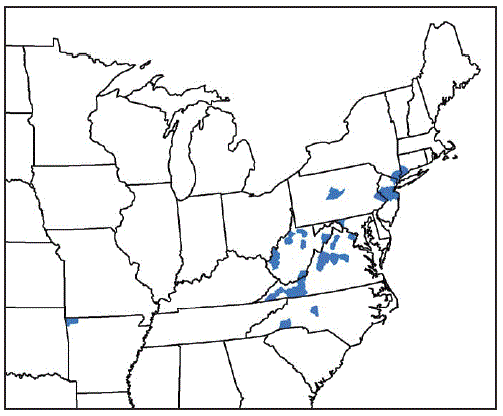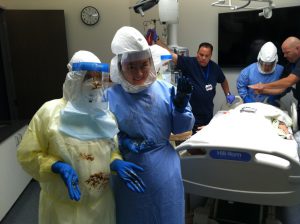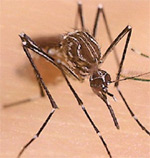Archive for November, 2018
The earthquake was centered about 5 miles north of Anchorage, Alaska’s largest city and there were no reported injuries.
Friday, November 30th, 2018
Structure Information Summary
Overall, the population in this region resides in structures that are resistant to earthquake shaking, though vulnerable structures exist. The predominant vulnerable building types are unreinforced brick masonry and reinforced masonry construction.
Secondary Effects
Recent earthquakes in this area have caused secondary hazards such as tsunamis, landslides and liquefaction that might have contributed to losses.
A 6.6 magnitude earthquake rocks Anchorage, Alaska
Friday, November 30th, 2018
| Magnitude | Mw 7.0 |
| Region | SOUTHERN ALASKA |
| Date time | 2018-11-30 17:29:26.2 UTC |
| Location | 61.33 N ; 149.94 W |
| Depth | 31 km |
| Distances | 2144 km NW of Vancouver, Canada / pop: 1,838,000 / local time: 09:29:26.2 2018-11-30 806 km W of Whitehorse, Canada / pop: 23,300 / local time: 09:29:26.2 2018-11-30 13 km N of Anchorage, United States / pop: 292,000 / local time: 08:29:26.2 2018-11-30 |
Yemen: No food, no money, but lots of child brides
Friday, November 30th, 2018“…..beggars congregate outside supermarkets filled with goods; markets are filled with produce in towns where the hungry eat boiled leaves; and restaurants selling rich food are a few hundred yards from hunger wards filled with desperation, pain and death...…”
“…..In the midst of this national catastrophe, desperate families are increasingly turning to child marriage: Today, more than two thirds of girls are married off before the age of 18, compared to 50 percent before the crisis began.
Parents marry off their daughters to be relieved of the cost of their care, or because they believe a husband’s family can offer better protection. Families also sell their daughters for dowry payments to cope with conflict-related hardship. Child brides are especially common in parts of Yemen that host large numbers of displaced people…..”
Ebola: “….If the outbreak goes unchecked, it could threaten the health and stability of neighboring countries: Uganda, Rwanda, and South Sudan. Such spread would lead to travel, trade, economic, and security implications reaching far beyond the region, which would exacerbate the toll of the outbreak and increase the cost of response…..”
Friday, November 30th, 2018“……We therefore believe that the U.S. government should allow CDC staff to return to the field for as long as the WHO and others deem necessary. Security arrangements should be made to ensure that any deployed teams could operate safely in affected areas. Options for the safe deployment of CDC personnel may include using existing security forces, such as the United Nations Organization Stabilization Mission in the DR Congo (MONUSCO), which is currently protecting WHO staff. Ideally, epidemic response agencies and organizations from other countries with Ebola experience that are not already engaged in the current response would similarly offer assistance to the WHO and the DRC.
The WHO has transformed its ability to respond to emergencies, but it remains dependent on international support, both technical and financial. It has requested that member states create a Contingency Fund for Emergencies (CFE) to support its work in responding to disease and other crises. To date, however, the CFE has received less than a third of its $100 million annual target. More support is clearly needed; it’s estimated that the response to the DRC Ebola outbreak alone will cost $44 million……”
Exotic Disease–Vector Tick Haemaphysalis longicornis
Friday, November 30th, 2018Beard CB, Occi J, Bonilla DL, et al. Multistate Infestation with the Exotic Disease–Vector Tick Haemaphysalis longicornis — United States, August 2017–September 2018. MMWR Morb Mortal Wkly Rep 2018;67:1310–1313. DOI: http://dx.doi.org/10.15585/mmwr.mm6747a3.

“…..H. longicornis is native to eastern China, Japan, the Russian Far East, and Korea. It is an introduced, and now established, exotic species in Australia, New Zealand, and several island nations in the western Pacific Region. Where this tick exists, it is an important vector of human and animal disease agents. In China and Japan, it transmits the severe fever with thrombocytopenia syndrome virus (SFTSV), which causes a human hemorrhagic fever (2), and Rickettsia japonica, which causes Japanese spotted fever…..”
Counties and county equivalents* where Haemaphysalis longicornis has been reported (N = 45) — United States, August 2017–September 2018
Video supports Secure, Preserve, Fight over Run, Hide, Fight in specific healthcare venues
Thursday, November 29th, 2018Active Shooter & Hockey Pucks
Thursday, November 29th, 2018“…… to fight effectively, faculty and students need to be prepared to throw objects that are heavy and will cause a distraction.
Hockey pucks provide the ability to be carried in brief cases or backpacks, are not considered a weapon, and will meet the goal of distracting the shooter, according to Gordon.
Currently, the union has distributed the pucks to its 800 members and is working with student groups to distribute an additional 1,700 pucks to students……..”

DRC: Fighting Malaria and Ebola at the same time
Thursday, November 29th, 201828 November 2018 | BENI: A spike in malaria cases is threatening the health of people in parts of the eastern Democratic Republic of the Congo (DRC) where health workers are also battling an Ebola outbreak. In response, a four-day mass drug administration (MDA) campaign was launched today in the Northern Kivu province town of Beni, with a target to reach up to 450 000 people with anti-malarial drugs combined with the distribution of insecticide-treated mosquito nets.
The malaria control campaign is being led by the DRC National Malaria Control Programme, supported by the World Health Organization (WHO), UNICEF, the Global Fund and the United States President’s Malaria Initiative (PMI). The campaign is modelled after the campaign implemented in Sierra Leone during the 2014 Ebola outbreak in West Africa, which was instrumental in lowering illness and deaths from malaria in the areas reached.
“Controlling malaria is critical in areas like North Kivu, as it causes widespread disease and death, especially among the region’s children,” says Dr Yokouide Allarangar, WHO’s Representative to the DRC. “This anti-malaria campaign will also help reduce the pressure on the overall health system, which is currently striving to protect people from the ongoing Ebola threat in the region.”
One campaign impacting two diseases
North Kivu’s malaria outbreak has overburdened Ebola responders; many suspected cases of Ebola have turned out to be malaria, as early symptoms of both diseases are similar. Up to 50% of people screened in Ebola treatment centers have been found to only have malaria.
Therefore, the anti-malaria campaign has two main aims.
Firstly, the distribution of insecticide-treated mosquito nets will prevent malaria transmission and its accompanying health consequences, thus saving lives.
Secondly, the mass drug administration will treat people who have already contracted malaria and curtail transmission of malaria among Ebola-affected populations and health centres. Having fewer people present with malaria will lessen the workload on already stretched Ebola treatment centres.
DRC’s malaria challenge
From 2016-2017, DRC observed an estimated increase of more than half a million malaria cases (24.4 million to 25 million), according to the WHO World malaria report 2018. DRC is the second-leading country in the world for malaria cases, after Nigeria, accounting for 11% of the 219 million cases and 435 000 deaths from malaria in 2017.
In North Kivu province, the area experiencing the brunt of the Ebola outbreak, there has already been an up to eight-fold increase in malaria incidence as of early September 2018 (or approximately 2000 cases registered per week) compared to the same period in 2017.
Despite recent improvements in coverage of malaria interventions, DRC continues to experience challenges in access to preventive and curative malaria interventions, as well as an environment that supports very high transmission rates. Funding, infrastructure challenges and insecurity are all key obstacles to achieving the intervention coverage needed to protect populations at risk.
Ongoing Ebola outbreak in North Kivu Province
North Kivu province is the epicentre of an Ebola outbreak that was announced on 2 August and has caused more than 365 cases and 236 deaths. The town of Beni has been one of the most affected. Political instability, violence, and a refugee and internally-displaced people crisis have made the current Ebola outbreak one of the most complex and difficult public health challenges in recent history.
India is currently experiencing its largest Zika virus outbreak
Wednesday, November 28th, 2018Alexander G Watts, M S A Carmen Huber, Isaac I Bogoch, Oliver J Brady, Moritz U G Kraemer, Kamran Khan; Potential Zika virus spread within and beyond India, Journal of Travel Medicine, , tay132, https://doi.org/10.1093/jtm/tay132
“……By the end of October, 147 cases had been reported in Jaipur, a popular tourist destination, and as of Nov 2, neighboring Gujarat state reported 1 case and Madhya Pradesh state reported 3 infections…..”






